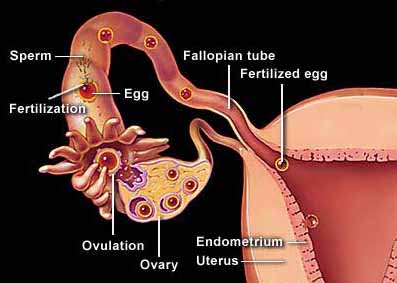

Fertility is the ability of people or animals to produce healthy offspring in abundance. In the English language, the term was originally applied only to females, but increasingly is applied to males as well, as common understanding of reproductive mechanisms increases and the importance of the male role is better known. The opposite of fertility is infertility.
Human fertility depends on factors of nutrition, sexual behavior, culture, instinct, endocrinology, timing, economics, way of life, and emotions. Animal fertility is no less complex, and may display astounding mechanisms.
The fertility rate is a demographic measure of the number of children per woman. Although it has been until recently considered to be a fairly reliable indicator of population growth, it is no longer so in much of Asia. Due to selective abortion and other factors, the number of women themselves is declining. Therefore, the fertility rate as it has traditionally been defined is no longer an authoritative measure of population growth in China, India, and Myanmar.
Both women and men have hormonal cycles which determine both when a woman can achieve pregnancy and when a man is most fertile. The female cycle is approximately twenty-eight days long, but the male cycle is variable. Women ovulate at about the fourteenth day of their cycle, this obviously being the most fertile time for females. Men can ejaculate and produce sperm at any time of the month, but their libido dips occasionally, which scientists guess is in relation to their internal cycle.
Aging Sperm Are Mutating Faster Than Scientists Expected SciTech Daily - December 23, 2025
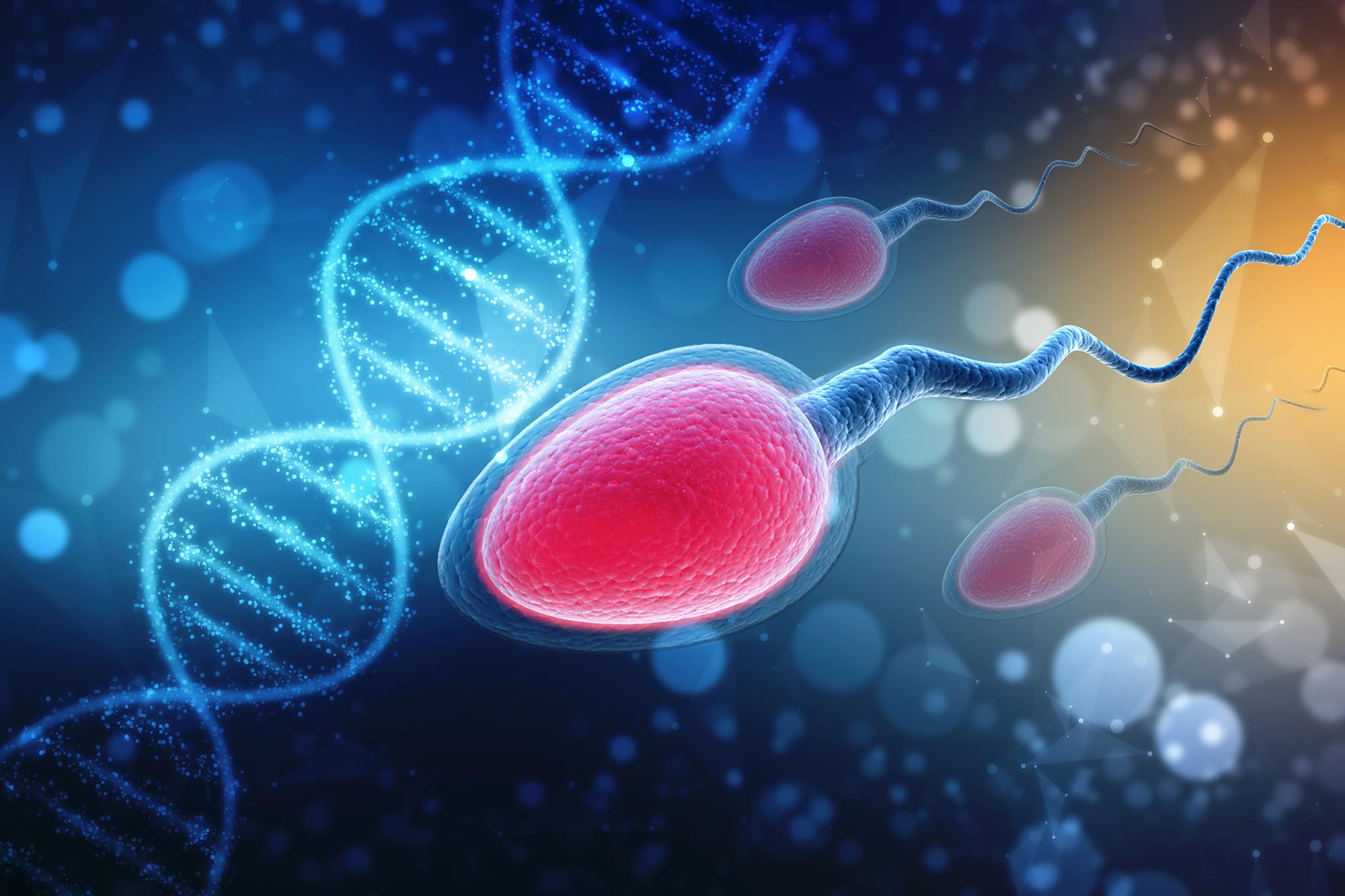
Harmful genetic mutations in sperm become much more common as men grow older, and new research shows this is not simply due to random DNA damage over time. Instead, some of these mutations appear to be actively favored during sperm production.
World First: Scientists Film The Exact Moment a Human Embryo Implants

This achievement, known as implantation, occurs deep within the uterus, and until now, scientists had only taken snapshots of the phenomenon.
Eight healthy babies have been born in the UK using a new IVF technique that successfully reduced their risk of inheriting genetic diseases from their mothers, the results of a world-first trial Science Alert - July 17, 2025
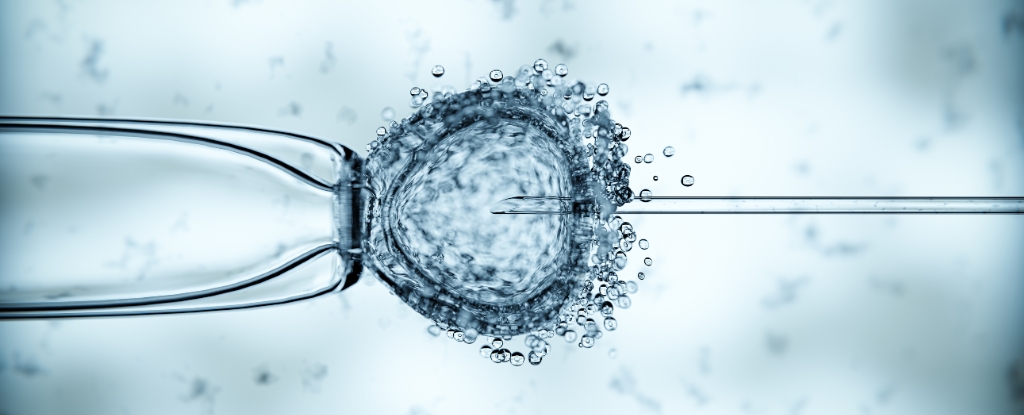
The findings were hailed as a breakthrough which raises hopes that women with mutations in their mitochondrial DNA could one day have children without passing debilitating or deadly diseases on to the children. One out of every 5,000 births is affected by mitochondrial diseases, which cannot be treated, and include symptoms such as impaired vision, diabetes and muscle wasting
Semen Allergies Aren't Rare After All (And Yes, Men Have Them Too) Science Alert - June 25, 2025

Imagine itching, burning, swelling, or even struggling to breathe just moments after sex. For a small but growing number of women, that's not an awkward anecdote - it's a medical condition. It's called seminal plasma hypersensitivity (SPH) - an allergy to semen. This rare but under-diagnosed allergy isn't triggered by sperm cells, but by proteins in the seminal plasma – the fluid that carries sperm. First documented in 1967, when a woman was hospitalized after a "violent allergic reaction" to sex, SPH is now recognized as a type 1 hypersensitivity, the same category as hay fever, peanut allergy, and cat dander. Symptoms range from mild to severe. Some women experience local reactions: burning, itching, redness, and swelling of the vulva or vagina. Others develop full-body symptoms: hives, wheezing, dizziness, runny nose and even anaphylaxis, a potentially life-threatening immune response.
Fetus Receives Life-Saving Medication Inside Womb in Medical First Science Alert - February 27, 2025
Doctors in the US have treated a fetus with a rapidly progressive congenital disease from inside the womb for the very first time. sInstead of giving medicine to a child with severe neuromuscular complications after they are born, a new case study details how a prospective mother agreed to take the medicine for her developing fetus while she was still pregnant.
Video: Scientists Filmed Ovulation From Start to Finish For The First Time Science Alert - November 24, 2024
An Alternative to the Pap Smear Is Here, No Speculum Required NYT - August 15, 2024
Starting this fall, women will be able to use a simple swab to screen for cervical cancer. The method offers an alternative to a procedure that many dread - and promises to address disparities in who develops the disease. For some women, getting a Pap smear is hell. Since her early twenties, Kevinn Poree has suffered from chronic vaginal pain - pain that led her to scream in agony the first time a gynecologist tried to insert a speculum.
Ovarian Egg Cells, Oocytes, Live an Unusually Long Time, And We Finally Know Why Science Alert - July 21, 2024

Mammals are born with all the oocytes (or egg cells) they'll ever need, but how the cells remain alive and active for so long is something of a mystery. A pair of studies have now revealed it could all come down to the robustness of their proteins.
'Mini placentas' may reveal roots of pregnancy disorders like preeclampsia Live Science - January 26, 2024
Tiny models of the human placenta are helping scientists study which proteins and genes are key to maintaining a healthy pregnancy. This research could help improve scientists' understanding of pregnancy disorders, like preeclampsia.
The Semen Microbiome Is a Thing, And It Might Be Impacting Fertility Science Alert - January 23, 2024
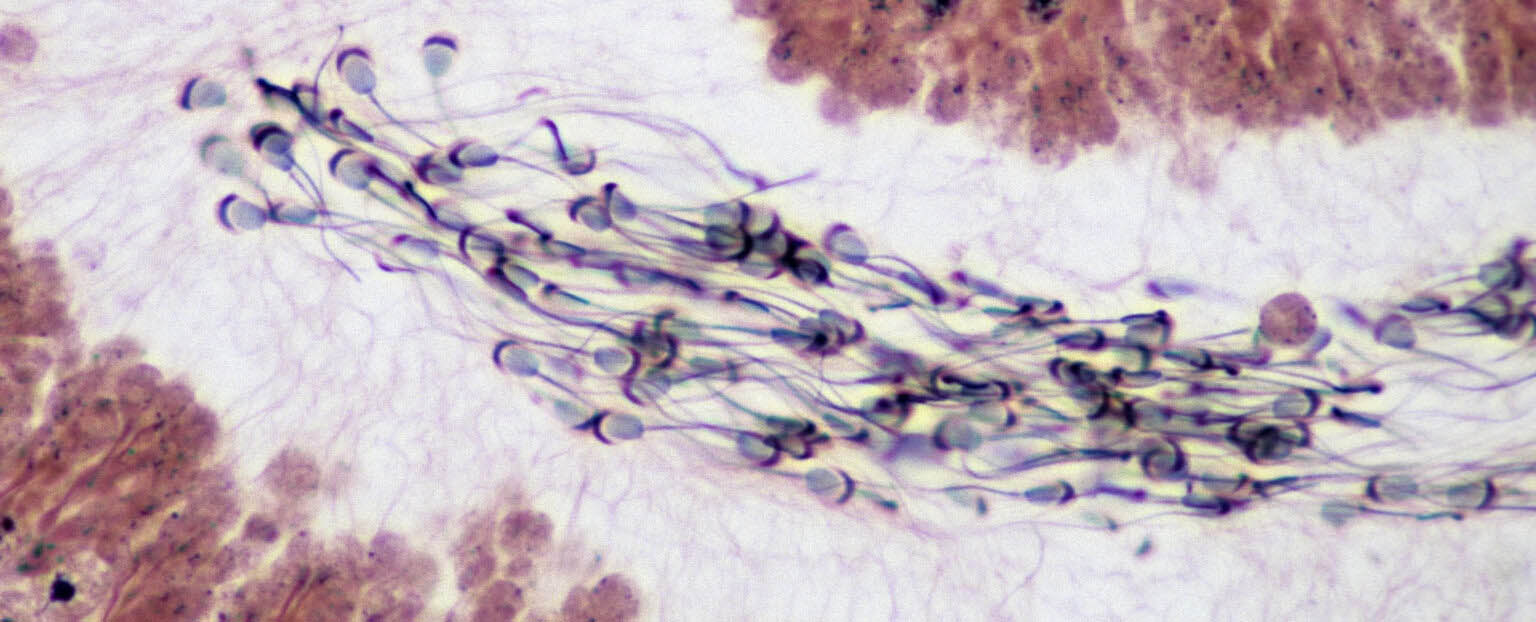
You've heard of the gut microbiome, and probably the vaginal microbiome: It turns out, semen can have its very own microbiome, too. Now, new research has found that it may even play a role in fertility.
Hormone secreted by fetus causes morning sickness: study Medical Express - December 25, 2023
A hormone produced by the human fetus is to blame for morning sickness in pregnant women, a study has found, paving the way to possible prevention and treatment. Nausea and vomiting affect approximately 70 percent of pregnant women. It's a protein known as GDF15.
Most ectopic pregnancies, in which a fertilized egg implants outside the uterus, take place in a fallopian tube, but in a rare case, a woman experienced one in her abdomen Live Science - December 14, 2023
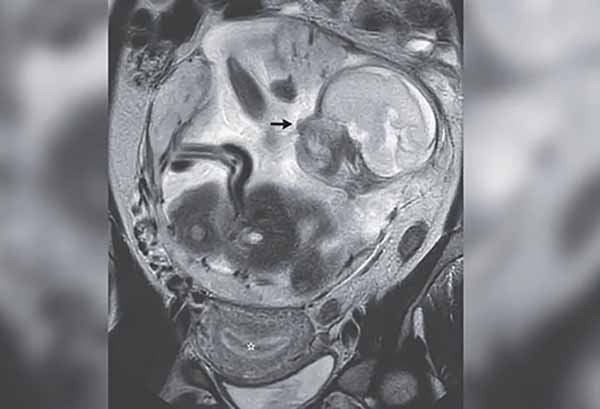
A woman in France went to the hospital with abdominal pain but soon learned that she was in the second trimester of a rare ectopic pregnancy, in which the fetus was growing in her abdomen. Before this latest pregnancy, the woman had delivered two babies at full term and experienced one miscarriage.
1 in 50 Million Chance: A 32-year-old woman from Alabama With Rare Double Uterus Is Pregnant in Both Science Alert - November 15, 2023
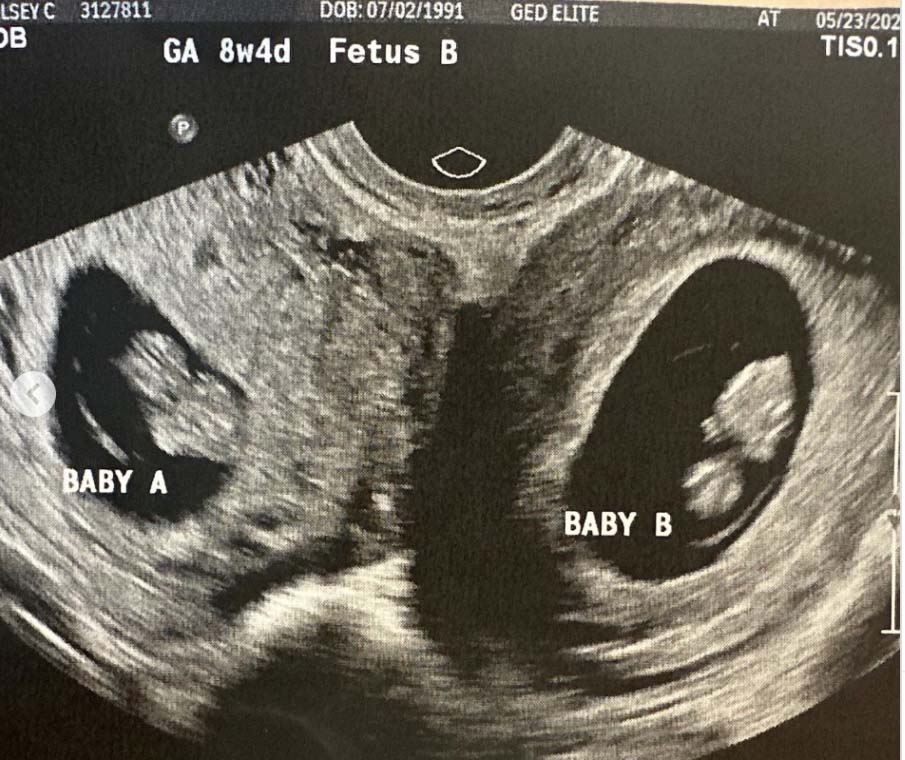
It's double trouble, with a unique twist: A 32-year-old woman from Alabama who was born with two uteruses is now pregnant in both. Kelsey Hatcher, who is documenting her story on her Instagram account "doubleuhatchlings," knew from the age of 17 she has "uterus didelphys," a rare condition where a person has a double uterus, thought to affect about 0.3 percent of females.
IVF Alternative: First Baby Born in Australia Through Cheaper, Safer Fertility Treatment
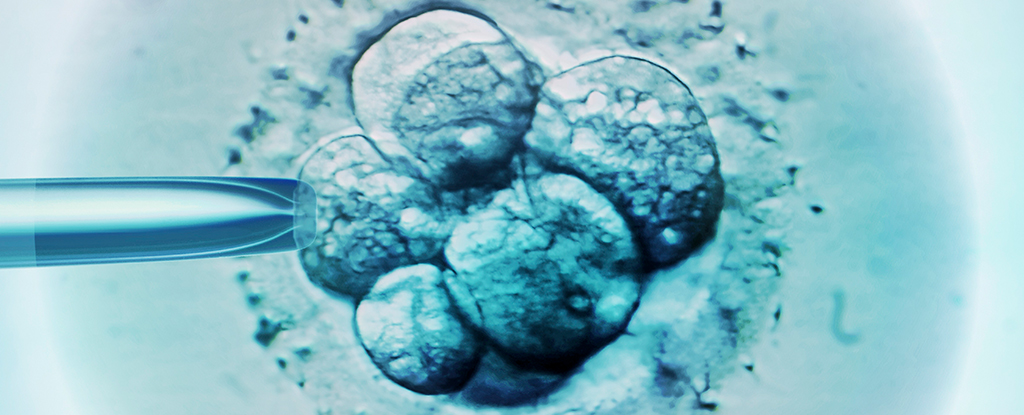
At barely a week old, little Bonnie Loutas is already a member of a rather small and exclusive club, joining just a few dozen children around the world conceived through an emerging form of assisted reproductive technology.
Scientists grow whole model of human embryo, without sperm or egg BBC - September 9, 2023
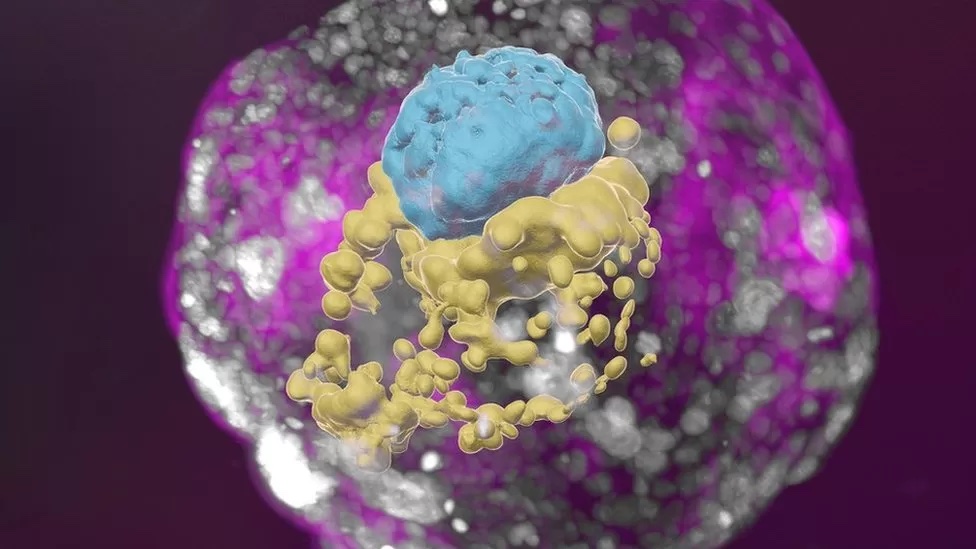
Scientists have grown an entity that closely resembles an early human embryo, without using sperm, eggs or a womb. The Weizmann Institute team say their "embryo model", made using stem cells, looks like a textbook example of a real 14-day-old embryo.
FDA approves first over-the-counter birth control pill CNN - July 13, 2023
Today’s approval is a groundbreaking expansion for women’s health in the U.S., and a significant milestone towards addressing a key unmet need for contraceptive access. Opill is expected to be available over-the-counter in stores in early 2024.
One in five women become pregnant naturally after having a baby conceived with IVF, finds new study Medical Express - June 21, 2023
Around 20% of women who needed fertility treatment, such as IVF, to conceive their first child are likely to get pregnant naturally in the future, finds a new UCL study.
Scientists Think They've Found The Cause of Morning Sickness Science Alert - June 21, 2023
A team of researchers after decades of research, has singled out one hormone which acts on the brain to cause vomiting as the likely cause of morning sickness - and added a stack of new evidence to back up their claims.
There's a Weird Link Between Teeth And The Evolution of Pregnancy Science Alert - November 27, 2022
Given how critical brain growth is to early human development, and head size, in turn, influences the size of our jaws, researchers suspected teeth may hold some valuable information on our ancestors' pregnancies. Teeth begin to form at around 6 weeks of gestation but don't develop their hardened exterior layers until the second trimester. From there, the growing layers can retain records of their life history, from weaning to sexual activity.
Evidence found of structural changes in the brain during pregnancy Medical Express - November 27, 2022
Prior research and anecdotal evidence has suggested that pregnancy in some people can lead to what some have described as "mommy brain," where pregnancy leads to foggy and/or forgetful thinking. Prior research has also found that pregnancy can play havoc with a person's emotions due to the release of a wide variety of hormones. In this new effort, the researchers suspected that pregnancy may lead to physical changes to the brain that may be responsible for the fogginess.
Sperm Counts Are Dropping Across The World, And The Decline Is Accelerating Science Alert - November 16, 2022
We Know How Sperm 'Remember' And Pass on Non-DNA-Coded Traits to Embryos Science Alert - October 15, 2022
Studies in mammals have shown that the 'memories' of various environmental effects - such as diet, weight, and stress - can be passed on from fathers to offspring, despite these effects not being coded for in the DNA sequences carried by sperm. Studies in mammals have shown that the 'memories' of various environmental effects - such as diet, weight, and stress - can be passed on from fathers to offspring, despite these effects not being coded for in the DNA sequences carried by sperm.
Scientists Are Figuring Out Why So Many IVF Embryos Fail to Develop Science Alert - July 26, 2022
Just because a human egg is fertilized does not mean the embryo will survive to birth. In the first few weeks of conception, there's a whole lot that can still go wrong. When a fertilized egg first begins to divide, it must duplicate its entire genome - that's all the DNA instructions stored in the cell - so that each of the two resulting cells can receive an exact copy. This process must be immaculately repeated each time a cell divides.
Human Birth Canals Are Seriously Twisted. Researchers Think They've Figured Out Why Science Alert - November 1, 2021
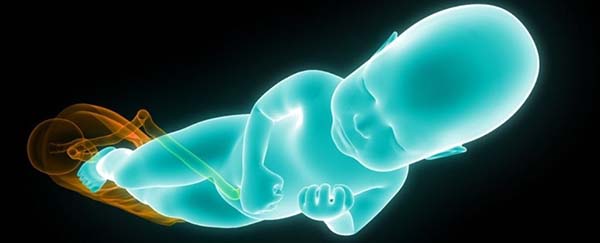
There's an odd twist to human physiology not seen in any other primate, that makes giving birth more complicated for our species. Now, a study using biomechanical modeling on gait and posture has provided some insights into this long-standing mystery.
Is the Y chromosome dying out? PhysOrg - August 29, 2020
The sex we're assigned at birth depends largely on a genetic flip of the coin: X or Y? Two X chromosomes and you (almost always) develop ovaries. An X and a Y chromosome? Testes. These packages of genetic material don't just differ in terms of the body parts they give us. With 45 genes (in comparison to around 1,000 on the X), the Y chromosome is puny. And research suggests it has shrunk over time - a proposition that some have, in turns, glumly or gleefully interpreted as predicting the demise of men. So is the Y chromosome really dying out? And what might that mean for men? To begin to answer these questions, we have to go back in time. "Our sex chromosomes weren't always X and Y. What determined maleness or femaleness was not specifically linked to them," said Melissa Wilson, an evolutionary biologist.
Discovery of novel autoantibody that is a major risk factor for recurrent pregnancy loss Medical Express - July 23, 2020
A research group has revealed for the first time in the world the high frequency of a novel autoantibody in women suffering from recurrent pregnancy loss. They previously discovered that this autoantibody also causes diseases such as thrombosis. It is expected that these results will contribute towards the illumination of the underlying mechanisms behind recurrent pregnancy loss, thrombosis and pregnancy complications such as hypertensive disorders; leading to the development of new treatment methods.
Fertility doctors in Greece and Spain say they have produced a baby from three people in order to overcome a woman's infertility BBC - April 12, 2019
The experimental form of IVF uses an egg from the mother, sperm from the father, and another egg from a donor woman.
It was developed to help families affected by deadly mitochondrial diseases which are passed down from mother to baby.
It has been tried in only one such case - a family from Jordan - and that provoked much controversy.
Boy and girl twins in Brisbane, Australia, have been identified as only the second set of semi-identical, or sesquizygotic, twins in the world -- and the first to be identified by doctors during pregnancy Science Daily - February 27, 2019
Young Brisbane twins, a boy and a girl, have been identified as only the second set of semi-identical, or sesquizygotic, twins in the world -- and the first to be identified by doctors during pregnancy. It is likely the mother's egg was fertilized simultaneously by two of the father's sperm before dividing. The mother's ultrasound at six weeks showed a single placenta and positioning of amniotic sacs that indicated she was expecting identical twins. However, an ultrasound at 14 weeks showed the twins were male and female, which is not possible for identical twins.
Researchers identify genes associated with polycystic ovary syndrome Medical Express - December 20, 2018
Irregular periods, often with weight gain, or just irregular periods and infertility ...
It took 4 years, 3 miscarriages and 1,616 shots to make this baby CNN - August 18, 2018
Wearing a rainbow swaddle, the 2-week-old is encircled with hundreds of syringes showing her parents' IVF struggles. The heart around her is made of the blood-thinner needles her mom used twice a day. The next ring shows the many IVF injections that her mom took.
After four years of trying, seven attempts, three miscarriages and 1,616 injections, the O'Neills say they are overjoyed to welcome their daughter to their family. London O'Neill was born on August 3. The photo of London was only meant to be something personal for Patricia and Kimberly O'Neill, a reminder of their fertility journey. After almost 55,000 shares on Facebook, the photo has become a symbol of hope for others struggling with infertility.
Polycystic ovary syndrome may be due to a hormonal imbalance before birth BBC - May 16, 2018
Researchers have been able to cure it in mice, and a clinical trial in human women is due to begin later this year. PCOS affects up to one in five women worldwide, it says. It affects how a woman's ovaries work - symptoms include irregular periods and difficulty getting pregnant.
It's by far the most common hormonal condition affecting women of reproductive age, but it hasn't received a lot of attention.
'Sperm magnets' that filter out deformed semen before women undergo IVF boosts pregnancy hopes by up to 10%, experts claim Daily Mail - March 9, 2018
Used prior to IVF, the treatment, known as magnetic-activated cell sorting (MACS), involves using magnets that attract old, deformed semen that would unlikely survive to the stage of egg fertilization. Women can then exclusively be given this 'healthy' sperm, which boosts their chances of conceiving. Since being used in the IVF Cube in Prague, MACS has already helped two women become pregnant, while eight are awaiting the results of their treatment.
Fertility hope as human eggs are grown in lab for the first time: British breakthrough paves the way for thousands of eggs to be harvested from small piece of ovarian tissue Daily Mail - February 9, 2018
First 'cell map' of 20,000 cells in mammalian embryo PhysOrg - January 9, 2018
Scientists at the Wellcome - MRC Cambridge Stem Cell Institute have used cutting-edge technology to profile over 20,000 individual cells to produce the first 'cell map' describing all the major cell types present at the early stage of mammalian embryo development. The researchers used the map to identify an important new pathway involved in blood cell development and say the map could open up new avenues for medicine and drug development. The patterns of genetic activity in the developing embryo were captured in the new 'cell map' that will help scientists understand how cells grow and acquire all the various specialized functions required for the body to function.
Sperm counts among western men have halved in last 40 years – study The Guardian - July 26, 2017
Reasons for the ‘shocking’ drop are unclear, say researchers, and represent a huge and neglected area of public health. The latest findings reveal that between 1973 and 2011, the concentration of sperm in the ejaculate of men in western countries has fallen by an average of 1.4% a year, leading to an overall drop of just over 52%.
Ladies, this is why fertility declines with age Medical Express - April 3, 2017
Researchers found that the microtubules that orchestrate chromosome segregation during cell division behave abnormally in older eggs. Instead of assembling a spindle in a controlled symmetrical fashion, the microtubules go in all directions. The altered movement of the microtubules apparently contributes to errors in chromosome segregation, and so represents a new explanation for age-related infertility.
Three-parent baby born to infertile couple in world first The Telegraph - January 18, 2017
The baby boy is thought to be the world's second three-parent baby after another child was created using a slightly different technique in Mexico last year.The Kiev team fertilized the mother's egg with her partner's sperm and then transferred the combined genes into an egg taken from a donor. The child has the genetic identity of its parents, combined with small amounts of DNA from a second woman. While this latest three-parent birth was designed to remedy infertility, the method employed last year in Mexico was intended as a way of dodging inherited genetic disease.
Baby's Feet Outside Mom's Uterus: Amazing Image Shows Rare Rupture Live Science - December 21, 2016
Just looking at this image might give the impression that this woman's baby literally kicked its feet right out of her uterus. But moms-to-be with kicky babies can rest easy - the MRI image showcases an extremely rare condition that was not caused by a baby's kick. The 33-year-old woman had developed a 1 inch (2.5 centimeters) tear in the wall of her uterus, and through the tear, part of the amniotic sac measuring 7.5 by 4.7 by 3.5 inches (19 by 12 by 9 cm) popped out, according to a brief report of her case. The amniotic sac is the fluid-filled membrane found in the uterus that contains the growing and developing fetus. But the woman had no symptoms that any of this was going on. She didn't learn of her condition until she came in for a routine ultrasound when she was 22-weeks pregnant.
Rise of the 'cellfie' - baby photos now begin at fertilization Telegraph - November 29, 2016
For anyone born before the 1950s their earliest baby pictures are likely to be at a few days old. Fast forward several decades and parents could take home an image of their child just 12 weeks after conception thanks to the advent of ultrasound and cheap printers. But groundbreaking fertility technology is allowing the family album to begin at fertilization with parents increasingly asking for images of their children when they are just a few cells in a petri dish.
Evidence suggests women's ovaries can grow new eggs The Guardian - October 8, 2016
Discovery challenges notion that women are born with a fixed number of eggs, and raises prospect of treatments which would allow older women to conceive
Boys conceived through IVF technique have lower than average fertility The Guardian - October 5, 2016
Tests on young men conceived via intra-cytoplasmic sperm injection show that they have lower sperm quantity and quality that those conceived naturally
First 'three person baby' born using new method BBC - September 27, 2016
The world's first baby has been born using a new "three person" fertility technique, New Scientist reveals. The five-month-old boy has the usual DNA from his mum and dad, plus a tiny bit of genetic code from a donor. US doctors took the unprecedented step to ensure the baby boy would be free of a genetic condition that his Jordanian mother carries in her genes. Experts say the move heralds a new era in medicine and could help other families with rare genetic conditions. But they warn that rigorous checks of this new and controversial technology, called mitochondrial donation, are needed.
Solving the mystery of defective embryos PhysOrg - January 4, 2016
It's the dream of many infertile couples: to have a baby. Tens of thousands of children are born by in vitro fertilization, or IVF, a technique commonly used when nature doesn't take its course. However, embryos obtained when a sperm fertilizes an egg in a test tube often have defects. In a study published today in the journal Proceedings of the National Academy of Sciences, researchers at the University of Montreal Hospital Research Centre (CRCHUM) discovered an important element in understanding how these anomalies occur in the developing embryo.
'Modern twist' on fertility technique may offer hope for sterile men The Guardian - November 3, 2015
Fourteen babies have been born following the injection of very immature sperm cells into eggs – a technique that could help infertile men to become fathers, scientists say. The 14 children were born to 12 men and their partners in Japan after round spermatid injection (Rosi), which has been banned in the UK since the 1990s due to concerns for the health of any children it might create.
Male fertility: Losing weight and cancer drugs 'boost sperm' BBC - March 6, 2015
Two approaches to boosting obese men's sperm have been presented at the annual meeting of the Endocrine Society. The first suggested that obese men who lost weight were more likely get their partners pregnant. The second found that a cancer drug helped some infertile men have children. Experts said the approaches were interesting alternatives to IVF and were opening up "real possibilities" for men. Weight loss is already widely advised for women struggling to conceive and obesity has long been suspected as a factor in male infertility.
Scientists describe the function of an enzyme critical to male fertility PhysOrg - March 4, 2015
Researchers are one step closer to unraveling the extraordinarily complex series of processes that leads to an event crucial to human reproduction: the creation of sperm. In a study published in the journal Genes and Development researchers have filled in details of how an enzyme, through interactions with a network of nearly two dozen other genes, protects the integrity of the germ line by giving rise to a class of RNA molecules that are essential to sperm development. The enzyme of interest, the RNA helicase MOV10L1, is likely the source of mutations that cause some cases of male infertility and could one day serve as a target for a form of reversible male contraception.
8 things I wish I'd known before freezing my eggs NBC - October 25, 2014
When it was revealed that Facebook and Apple are paying for women employees to freeze their eggs, more young women may be wondering, is it right for me? Robyn Ross, a Los Angeles recruitment director, shares the wisdom of her experience with egg freezing.
1. I was able to overcome my fear of needles
2. It took pressure off dating
3. Guys think it's a great idea
4. Even though I had bought time, I wanted to have a baby as soon as possible
5. I didn't realize all the work it would take to put them back in
6. It takes a lot of eggs to make one baby
7. I wish I had frozen more eggs
8. I never forget what a miracle my little girl is
Sugary Drinks May Slow Down Sperm Live Science - May 30, 2014
Men might want to think twice before grabbing another soda out of the fridge. Scientists have already shown sugary drinks can add unwanted inches to waistlines, but a new study shows sugar-sweetened drinks such as soda may also lower semen quality. The researchers found that high consumption of sugary drinks was associated with low sperm motility, or sperm movement - but surprisingly, this was true only for healthy, lean men. The researchers found no relationship between sugary drink consumption and sperm motility in overweight or obese men.
Stress degrades sperm quality, study shows Science Daily - May 29, 2014
Psychological stress is harmful to sperm and semen quality, affecting its concentration, appearance, and ability to fertilize an egg, according to a study. It is not fully understood how stress affects semen quality. It may trigger the release of steroid hormones called glucocorticoids, which in turn could blunt levels of testosterone and sperm production. Another possibility is oxidative stress, which has been shown to affect semen quality and fertility.
Female pigs can recognize the sex of sperm and influence the sex of their offspring PhysOrg - May 21, 2014
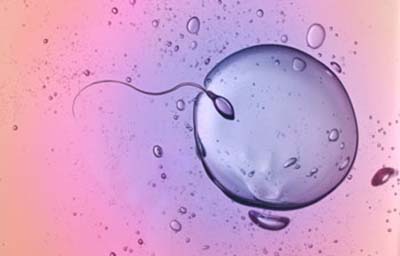
Female pigs' reproductive systems recognize whether a sperm will produce a boy or a girl before it reaches and fertilizes the egg, and their oviduct (fallopian tubes) change in response. Scientists think this may be a way females unconsciously influence the sex of their offspring. Although in nature the ratio would normally be 50:50, this suggests females might be able to change the environment of the oviduct to favor one sex over the other, giving that sperm a better chance of winning the race to the egg.
Fertility mystery solved: protein discovered that joins sperm with eggs The Guardian - April 16, 2014
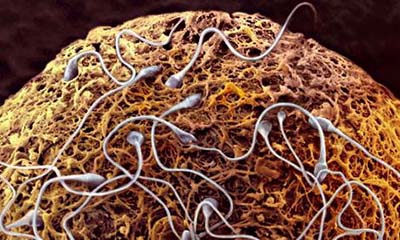
British scientists' identification of Juno molecule opens door to new developments in fertility treatment and contraception.
IVF success rate 'could be doubled' BBC - December 19, 2013
>
Mapping the genetic code of fertilized eggs could double the success rate of IVF, researchers claim. The new screening method to detect healthy embryos could raise the success of IVF to 60% or more, according to a Peking University and Harvard University team. Trials of the procedure in China offer hope to older women, they say.
Edinburgh fruit fly study links 'huddle' gene to infertility BBC - November 26, 2012
Scientists have identified a gene which they claim could help solve the problem of infertility in humans. Edinburgh University conducted a study with fruit flies, during which they found when the gene SRPK is missing, chromosomes do not "huddle" together. They believe the huddling process is necessary to ensure the egg's healthy development and fertilization. Chromosomes contain DNA and when they divide it can lead to sterility and low fertility, according to the study. Previous research in mice has shown that the huddling process is essential in order for eggs to remain fertile, the scientists said.
Sperm Act Like Bumbling Drunks on Way to Egg Live Science - May 8, 2012
Making a baby seems to rely on bumbling, crawling sperm, new research suggests, putting the kibosh on the popular notion that sperm are strong swimmers, whipping their tails back and forth to navigate though the uterus toward their ultimate goal of infiltrating the egg. By studying sperm in tiny channels, researchers have discovered their travels can be arduous; instead of swimming merrily through the uterus, sperm cells tend to follow the walls of the reproductive tract, crawling along and inching around corners, frequently colliding with each other and with the walls.